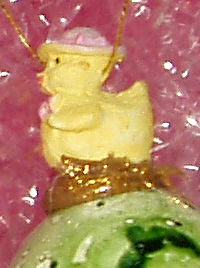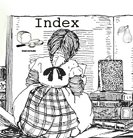EASTER TIME
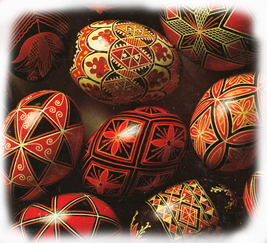 *
*
>>For nearly 1,000 years Easter has been the principal feast day of the Russian calendar, and the Orthodox Easter continues to celebrate wherever there are Russians to celebrate it..."1
This includes German-Russian Catholics and Protestant who lived in Russia, who before they left Germany in the late 1700s or 1800s and migrated to Russia, or after many migrated from Russia to the USA, Canada, S. America, China and throughout the world.
Where did the idea of appetizers to roasts to rich cakes become a part of our Easter celebration? The rites predate Christianity itself. It was the celebration of the winter being over and the spring coming forth with new leaves and new life.
>>When Prince Vladimir of Kiev brought Christianity to Russia in the 10th century, he overlaid Easter upon an older festival that marked the end of bleak winter. "The goodness hidden in the hearts of the holy shall be revealed in their risen bodies just as bare trees put out their leaves in spring."<<2
Since men and women of Germany and Russia celebrated the coming of spring and Easter, there has been the butchering, the cooking and the baking which created all the delicious foods created for this celebration which was the survival of those still living who were and are able to witness a new spring and in the memory of the crucified Christ who rose on the seventh day from the dead and joined his heavenly father, God.
The German-Russians brought their traditions to which they added Russian foods and so there are and were feasts. So what did they prepare and make for this joyous occasion?
1. & 2. quotes from p. 41 RUSSIAN COOKING by Helen and George Papashvily, TIME LIFE- BOOKS, NY, and the *photographs are by Eliot Elisofon and Richard Jeffery
Appetizers:
Main course:
Meats:
- Sausages
- Roasted Suckling Pig
- Cold Ham
- Baked Ducks
- Chicken
Vegetables:
Breads:
- Kulich
Desserts:
Drinks:
- Tea
- Vodka
- Wine
 GR Stories &
Traditions such as coloring of Easter Eggs, Games, Songs,
Family Stories etc. etc. etc.:
GR Stories &
Traditions such as coloring of Easter Eggs, Games, Songs,
Family Stories etc. etc. etc.:
- Easter in Borodino, Bessarabia
-
Easter Bunny Stories
-
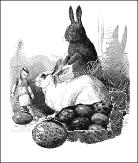 Family
Tale of Easter
Bunnies
by Judy A. Remmick-Hubert
Family
Tale of Easter
Bunnies
by Judy A. Remmick-Hubert
-
- Marin's Easter Tree
Marin's
Easter Egg Tree
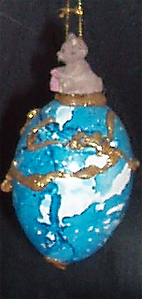
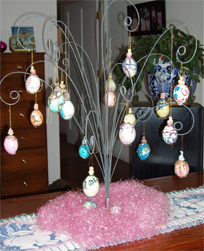
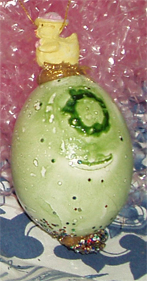
This project is great for kids of all ages. The eggs above were made by my older granddaughter, Marin, when she was about six or seven. We used a easter egg dye, which can be purchased at most grocery stores, glue gun, which was loaded with different color glue, sparkles, tiny toys with string attached, and chicken eggs which were blown free of the insides.
| ............... |
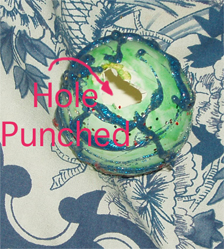
Hole punched in the egg |
Yellow Ducky used for the top of this egg
|
Actually the holes were punched into the eggs before they were decorated. What is shown above is a finished egg which has lost it's top and needs to have the top reglued.
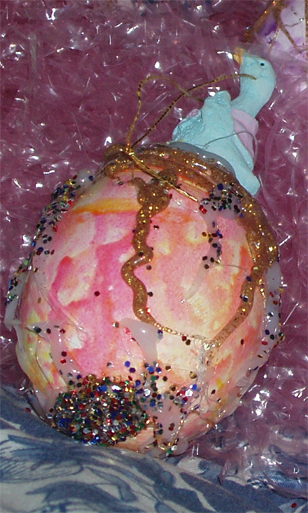
The egg doesn't have to be perfect. You can see in this photo that a six year old isn't able to always control the glue or get all the sparkles on the wet glue. It's the working together with your children or grandchildren or your friends that is the most important. So, don't try to be perfect. Just enjoy.
Eggs:
- As many washed white eggs as you need
- Punch to poke holes at top and bottom of egg
- Someone who will blow out the egg whites and yolk
- Wash egg to rid of any egg white or yolk
Dying eggs:
- Box of dye with instructions (there are different kinds for different textures).
- Pint size glass jars (dyes can stain good china, stoneware...)
- dye coloring sticks [option]
- Water
- Egg holders
Preparation for decorations:
- Glue gun
- Glue sticks for gun which can be different colors
- Sparkles of different colors
- Tiny toys with string attached
- Items can be found at hobby shops and variety with each store
What to do next: Put it all together and enjoy the results for years to come!
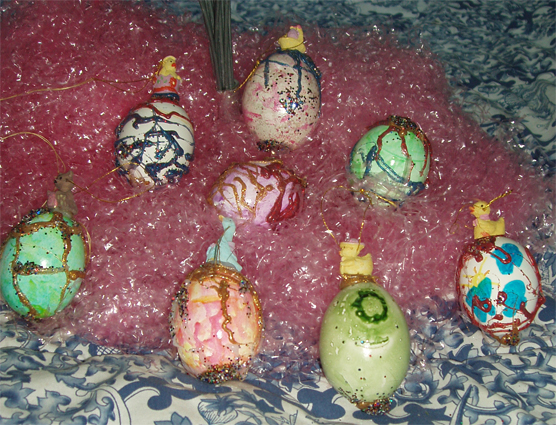
These eggs are a real treasure for this grandma!
There is different kind of egg laid by the South American Araucana hen. Here in the US they are called Ameraucanas because they have mixed with American breeds. The hens lay different colors which gives them the nickname of Easter Chickens, and has less colesteral, I understand, and therefore has done the work of coloring the eggs for you. Here is a carton full of their eggs. They come in pinks, blues, greens and variety of browns plus some producers have gone as far as getting eggs with swirls.
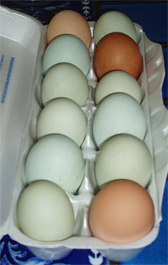
- Holidays > EASTER: http://eleaston.com/holidays.html
- German Customs, Traditions, and, Holidays: Easter holidays: http://www.serve.com/shea/germusa/customs.htm
- Easter Bunny: http://www.holidays.net/easter/bunny1.htm

